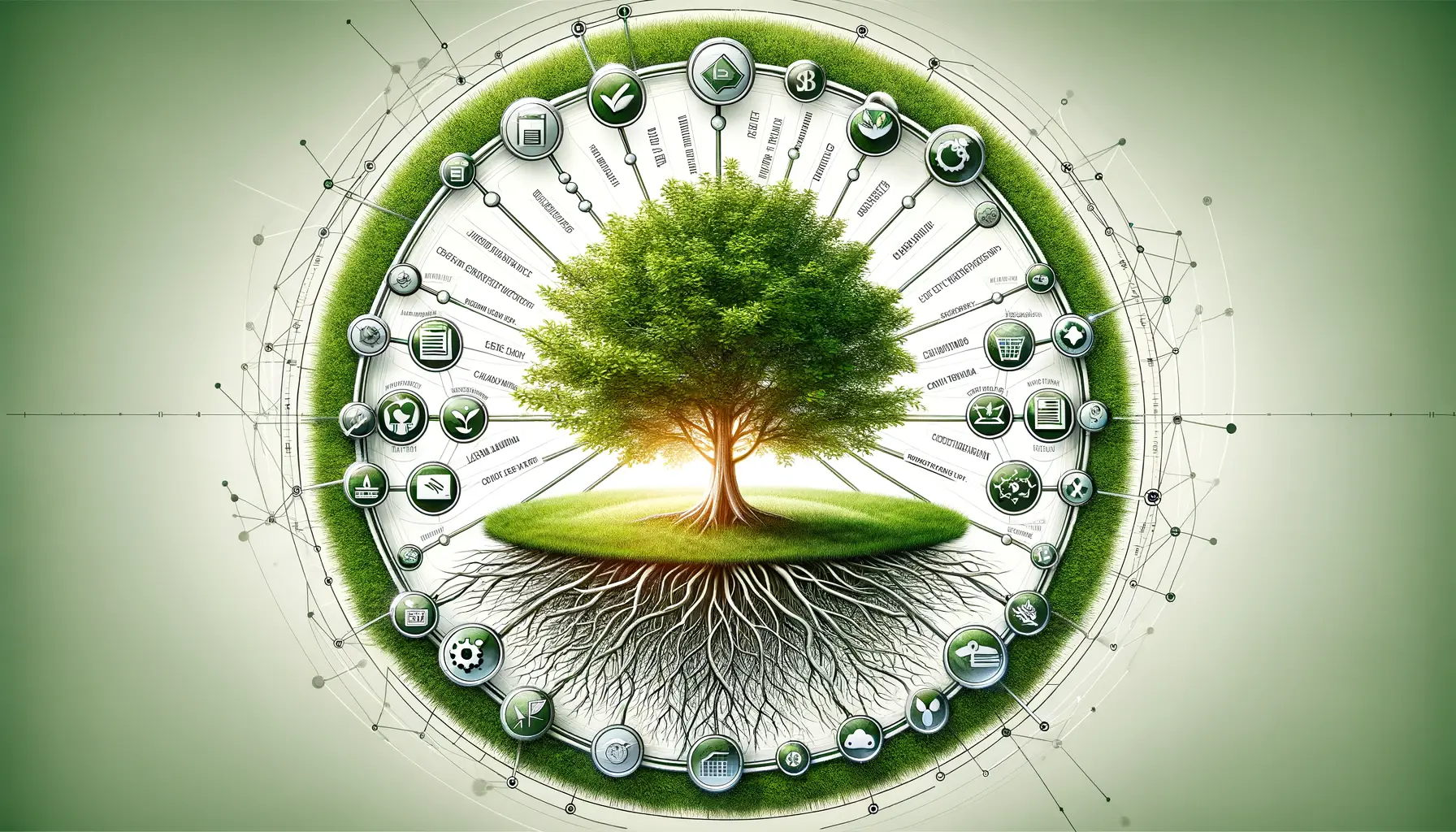The advent of Google’s Bard has been a watershed moment in the evolution of digital marketing, heralding a new era where artificial intelligence (AI) plays a pivotal role in shaping marketing strategies and consumer interactions.
As we stand on the cusp of this technological revolution, it’s imperative to delve into the long-term implications of Bard on the marketing landscape.
This exploration is not just about understanding a tool but about foreseeing the transformation of an industry.
Google’s Bard, with its sophisticated AI capabilities, promises to redefine how brands engage with their audiences, offering unprecedented personalization, efficiency, and insights.
The main keyword, predictions, serves as a beacon, guiding us through the potential future scenarios where Bard’s influence permeates every facet of marketing.
From content creation to consumer behavior analysis, Bard is poised to become an indispensable asset for marketers worldwide.
- Understanding Google’s Bard and Its Capabilities
- Enhancing SEO Strategies with Bard
- Transforming Customer Insights with Bard
- Optimizing Ad Campaigns with Bard
- Revolutionizing Customer Service with Bard
- Future of Marketing with Bard: Innovations and Challenges
- Strategizing for the Future: Bard and Marketing Evolution
- Embracing the Future: The Unfolding Impact of Google’s Bard on Marketing
- FAQs: Navigating the Impact of Google’s Bard on Marketing
Understanding Google’s Bard and Its Capabilities
The Genesis of Bard
At its core, Google’s Bard is an AI-driven platform designed to enhance the way information is processed, interpreted, and utilized in the digital marketing realm.
Its development is a testament to Google’s commitment to harnessing AI for creating more dynamic and responsive marketing tools.
Bard’s ability to understand and generate human-like text has opened new avenues for marketers to craft more engaging and relevant content.
This innovation is not just about automating tasks but about enriching the interaction between brands and consumers.
By analyzing vast amounts of data, Bard can identify patterns and preferences, enabling marketers to tailor their strategies to the individual needs of their audience.
This level of personalization was once a distant dream but is now increasingly becoming a reality.
Revolutionizing Content Creation
The impact of Bard on content creation is profound.
Marketers can leverage Bard to generate creative, original content that resonates with their target audience.
This capability is crucial in an era where content is king, and the battle for consumer attention is fierce.
Bard’s AI can help create content that is not only engaging but also optimized for search engines, thereby enhancing visibility and reach.
Moreover, Bard’s ability to analyze and interpret user queries in real-time means that the content can be more responsive to current trends and user interests.
This dynamic approach to content creation ensures that marketing messages remain relevant and impactful, thereby fostering a stronger connection with the audience.
Bard’s role in content creation marks a significant shift towards more personalized and responsive marketing strategies.
As we delve deeper into the capabilities and potential of Google’s Bard, it becomes evident that its impact on marketing is not just immediate but will continue to evolve.
The ability to generate human-like text and analyze consumer data at an unprecedented scale is set to redefine the boundaries of digital marketing.
In the following sections, we will explore how Bard influences various aspects of marketing, from SEO strategies to customer engagement and beyond.
Enhancing SEO Strategies with Bard
The integration of Google’s Bard into search engine optimization (SEO) strategies marks a significant evolution in how marketers approach content visibility and ranking on search engines.
Bard’s AI capabilities enable a deeper understanding of search intent, allowing for the creation of content that aligns more closely with what users are seeking.
This section delves into the transformative role Bard plays in SEO, highlighting its impact on keyword optimization, content relevance, and user engagement.
One of the key areas where Bard influences SEO is through its ability to process natural language queries.
This capability ensures that content created with Bard’s assistance is not only optimized for keywords but also for the context in which these keywords are used.
As a result, marketers can achieve a higher degree of relevance in their content, which is a critical factor in search engine rankings.
Keyword Optimization and Content Relevance
- With Bard’s advanced AI, marketers can refine their keyword strategies, identifying long-tail keywords and semantic variations that are more likely to match user queries. This approach enhances the visibility of their content in search results, attracting a more targeted audience.
- Bard’s understanding of context and user intent allows for the creation of content that addresses specific queries more effectively. This relevance not only improves SEO performance but also increases user satisfaction, as visitors find the information they need more easily.
Improving User Engagement and Experience
- By generating content that is both informative and engaging, Bard helps marketers improve dwell time and reduce bounce rates, which are key metrics for SEO success. Engaging content encourages users to spend more time on a website, signaling to search engines that the site provides valuable information.
- Bard can also assist in creating a more structured and user-friendly content layout, making it easier for visitors to navigate through information. This improved user experience is another factor that search engines consider when ranking websites.
SEO strategies enhanced with Bard’s AI capabilities are more aligned with the evolving algorithms of search engines, ensuring better performance and higher rankings.
The integration of Bard into SEO practices represents a forward-thinking approach to digital marketing.
By leveraging Bard’s AI, marketers can not only optimize their content for search engines but also provide a more engaging and relevant experience for users.
This synergy between AI technology and SEO strategies is set to redefine the standards of content marketing, making it more adaptive and effective in reaching and engaging target audiences.
Transforming Customer Insights with Bard
The advent of Google’s Bard has significantly enhanced the ability of marketers to gather and interpret customer insights.
This transformation is rooted in Bard’s advanced data analysis capabilities, which allow for a deeper understanding of consumer behavior, preferences, and trends.
By leveraging these insights, marketers can make more informed decisions, tailor their strategies more effectively, and ultimately drive better business outcomes.
At the heart of this transformation is Bard’s ability to process and analyze large volumes of data from diverse sources.
This capability enables marketers to uncover hidden patterns and trends that were previously difficult to detect.
As a result, businesses can anticipate customer needs and preferences with greater accuracy, leading to more personalized and effective marketing strategies.
Personalization and Targeted Marketing
- Bard’s insights into customer behavior and preferences enable marketers to segment their audience more effectively. This segmentation allows for the creation of highly personalized marketing messages, which are more likely to resonate with the intended audience.
- By understanding the nuances of customer interactions and engagements, Bard helps marketers tailor their campaigns to match the specific needs and interests of different segments. This targeted approach not only improves the effectiveness of marketing efforts but also enhances the overall customer experience.
Anticipating Market Trends
- Through its advanced data analysis, Bard provides marketers with foresight into emerging market trends. This predictive capability is invaluable for staying ahead of the competition and aligning marketing strategies with future consumer demands.
- Marketers can use Bard’s insights to innovate and adapt their products or services to meet the evolving needs of their customers. This proactive approach to market trends ensures that businesses remain relevant and competitive in a rapidly changing marketplace.
Leveraging Bard for customer insights transforms data into actionable intelligence, enabling marketers to craft strategies that are not only responsive but also anticipatory of future trends.
The role of Bard in transforming customer insights represents a paradigm shift in how businesses approach market research and customer engagement.
By harnessing the power of AI to analyze data at scale, marketers can gain a deeper understanding of their audience, anticipate changes in the market, and tailor their strategies to meet the dynamic needs of consumers.
This level of insight and personalization is a game-changer for the marketing industry, offering new opportunities for growth and innovation.
Optimizing Ad Campaigns with Bard
The integration of Google’s Bard into advertising strategies has opened up new avenues for optimizing ad campaigns.
Bard’s AI capabilities allow for a more nuanced understanding of audience behavior and preferences, enabling marketers to design and execute campaigns that are highly targeted and effective.
This section explores how Bard is revolutionizing ad campaign management, from audience targeting to performance analysis.
One of the standout features of Bard is its ability to analyze vast amounts of data to identify optimal targeting criteria.
This precision targeting ensures that ads are shown to users who are most likely to be interested in the product or service, thereby increasing the efficiency of ad spend and improving ROI.
Enhanced Audience Targeting
- By leveraging Bard’s data analysis capabilities, marketers can refine their audience segmentation, identifying niche segments that were previously overlooked. This targeted approach not only improves campaign performance but also reduces the cost of customer acquisition.
- Bard’s insights into consumer behavior and preferences enable the creation of more personalized ad messages. Personalization has been shown to significantly increase engagement rates, as ads are more relevant to the individual needs and interests of the audience.
Real-Time Campaign Optimization
- Bard’s ability to process real-time data allows marketers to adjust their campaigns on the fly. This agility is crucial in today’s fast-paced digital environment, where consumer interests and market dynamics can shift rapidly.
- Through continuous analysis of campaign performance data, Bard identifies trends and patterns that can inform strategic adjustments. This ongoing optimization process ensures that ad campaigns remain effective over time, maximizing their impact and ROI.
The use of Bard in ad campaign optimization represents a significant advancement in digital advertising, enabling marketers to achieve unprecedented levels of targeting, personalization, and efficiency.
The transformative impact of Bard on ad campaign optimization cannot be overstated.
By harnessing the power of AI for data analysis and real-time decision-making, marketers can navigate the complexities of the digital advertising landscape with greater ease and effectiveness.
This leads to not only improved campaign performance but also a better understanding of the digital ecosystem as a whole.
As Bard continues to evolve, its role in shaping the future of advertising is expected to grow, offering exciting possibilities for innovation and success in the marketing world.
Revolutionizing Customer Service with Bard
The advent of Google’s Bard has significantly impacted the realm of customer service, offering innovative solutions to enhance customer interactions and satisfaction.
Bard’s AI-driven capabilities enable businesses to provide personalized, efficient, and more human-like customer service experiences.
This section explores the transformative effects of Bard on customer service practices, highlighting its role in automating responses, personalizing interactions, and improving overall service quality.
At the forefront of this transformation is Bard’s ability to understand and process natural language, allowing it to interact with customers in a way that feels more natural and engaging.
This capability not only improves the efficiency of customer service operations but also enhances the quality of customer interactions, leading to higher satisfaction levels.
Automating Customer Interactions
- Bard’s natural language processing capabilities enable it to handle a wide range of customer inquiries automatically. This automation reduces response times and frees up human agents to focus on more complex issues, thereby improving the overall efficiency of customer service departments.
- The AI can be programmed to recognize and respond to common customer queries, ensuring that customers receive immediate and accurate answers to their questions. This level of responsiveness is crucial for maintaining high customer satisfaction and loyalty.
Personalizing Customer Experiences
- By analyzing customer data, Bard can tailor interactions to meet the specific needs and preferences of individual customers. This personalization makes customers feel valued and understood, significantly enhancing their experience with the brand.
- Personalized recommendations and solutions based on past interactions and preferences can significantly increase the effectiveness of customer service efforts, leading to more successful problem resolution and higher customer retention rates.
Bard’s impact on customer service extends beyond mere efficiency improvements, offering a more personalized and engaging customer experience that sets new standards in customer care.
The revolution in customer service brought about by Google’s Bard is a testament to the power of AI in transforming business operations.
By automating routine tasks, personalizing customer interactions, and enhancing the overall quality of service, Bard is helping businesses to not only meet but exceed customer expectations.
As AI technology continues to evolve, the potential for further innovation in customer service is vast, promising even greater improvements in efficiency, personalization, and customer satisfaction.
Future of Marketing with Bard: Innovations and Challenges
The integration of Google’s Bard into marketing strategies heralds a new era of innovation and efficiency.
However, this journey is not without its challenges.
As marketers navigate the evolving landscape, they must balance the potential of Bard’s AI capabilities with the ethical considerations and practical challenges of implementing AI-driven strategies.
This section explores the future of marketing with Bard, highlighting both the innovations it brings and the hurdles that marketers may face.
The promise of Bard lies in its potential to transform marketing practices, making them more data-driven, personalized, and efficient.
Yet, the adoption of such advanced AI technology also raises questions about data privacy, the authenticity of AI-generated content, and the need for human oversight in AI-driven decisions.
Driving Marketing Innovation
- Bard’s AI capabilities open up new possibilities for creative marketing strategies. From generating dynamic content that adapts to user behavior to providing real-time insights into market trends, Bard enables marketers to be more innovative in their approach.
- The ability to analyze vast datasets in real-time allows for more precise targeting and personalization, enhancing the effectiveness of marketing campaigns and improving customer engagement.
Addressing Ethical and Practical Challenges
- As marketers leverage Bard’s capabilities, they must also navigate the ethical implications of using AI in marketing. This includes ensuring data privacy, avoiding bias in AI algorithms, and maintaining transparency with customers about the use of AI in marketing practices.
- Implementing Bard effectively also presents practical challenges, such as integrating AI technology with existing marketing systems, training staff to work with AI tools, and continuously monitoring and refining AI-driven strategies to ensure they meet ethical standards and business objectives.
Ignoring the ethical and practical challenges of using Bard in marketing could undermine the trust of customers and negatively impact brand reputation.
The future of marketing with Google’s Bard is both exciting and complex.
As marketers embrace the innovations brought about by Bard, they must also be mindful of the challenges and responsibilities that come with using AI in marketing.
By addressing these challenges head-on and leveraging Bard’s capabilities ethically and effectively, marketers can unlock new levels of innovation and success in their marketing strategies.
The journey ahead is one of exploration, learning, and adaptation, as the marketing world continues to evolve in the age of AI.
Strategizing for the Future: Bard and Marketing Evolution
The integration of Google’s Bard into marketing strategies signifies a pivotal shift towards a more AI-driven approach in the industry.
As we look towards the future, it’s clear that Bard will play a crucial role in shaping the evolution of marketing practices.
This final section explores how marketers can strategize for the future, taking full advantage of Bard’s capabilities to stay ahead in an increasingly competitive landscape.
Embracing Bard requires a forward-thinking mindset, with a focus on innovation, adaptability, and continuous learning.
Marketers must be prepared to explore new possibilities, experiment with AI-driven strategies, and refine their approaches based on insights and outcomes.
The future of marketing with Bard is not just about leveraging technology but about reimagining how we connect with and engage audiences in meaningful ways.
Emphasizing Continuous Learning and Adaptation
- To fully leverage Bard’s potential, marketers must commit to continuous learning and adaptation. This includes staying informed about the latest AI developments, understanding how Bard’s capabilities can be applied to different marketing challenges, and being willing to experiment with new strategies.
- Adaptation also involves being responsive to feedback and outcomes, using insights gained from Bard to refine and optimize marketing strategies over time. This iterative process is key to achieving long-term success in an AI-driven marketing environment.
Building a Collaborative Ecosystem
- Maximizing the benefits of Bard requires a collaborative approach, where technology and human expertise work in tandem. Marketers should foster a culture of collaboration, encouraging teams to share insights, learn from each other, and work together to develop innovative strategies that leverage Bard’s AI capabilities.
- Engaging with a broader ecosystem, including technology partners, industry experts, and academic institutions, can also provide valuable perspectives and resources that enhance the effectiveness of Bard-driven marketing strategies.
The future of marketing with Bard is not just about adopting new technology but about embracing a new way of thinking and working. By focusing on innovation, collaboration, and continuous improvement, marketers can navigate the challenges and seize the opportunities presented by AI-driven marketing.
As we conclude our exploration of the long-term impact of Google’s Bard on marketing, it’s evident that Bard represents a significant milestone in the evolution of digital marketing.
By strategizing for the future with Bard at the forefront, marketers can unlock new levels of creativity, efficiency, and personalization, setting the stage for a new era of marketing excellence.
The journey ahead is filled with potential, and the key to unlocking this potential lies in our ability to innovate, adapt, and collaborate in an AI-enhanced marketing landscape.
Embracing the Future: The Unfolding Impact of Google’s Bard on Marketing
The exploration of Google’s Bard and its long-term impact on marketing reveals a landscape brimming with potential and challenges.
As we’ve navigated through the various dimensions of Bard’s influence, from content creation and SEO optimization to customer service and ad campaign management, a common theme emerges: the transformative power of AI in marketing.
This conclusion aims to synthesize our insights, offering a comprehensive overview of how Bard is reshaping the marketing domain and what this means for the future.
The Paradigm Shift in Marketing
The advent of Bard signifies more than just technological advancement; it heralds a paradigm shift in how marketing is conceptualized and executed.
The integration of AI into marketing strategies introduces a level of precision, personalization, and efficiency previously unattainable.
This shift is not without its challenges, including ethical considerations and the need for continuous adaptation, but the overarching trajectory points towards a more dynamic and responsive marketing ecosystem.
Key Takeaways and Future Directions
- The role of Bard in enhancing content relevance and SEO strategies underscores the importance of AI in understanding and catering to user intent.
- Through Bard, customer insights become more nuanced, enabling marketers to craft strategies that resonate on a personal level with their audience.
- The optimization of ad campaigns and customer service through Bard illustrates the potential for AI to streamline operations and improve customer experiences.
- Despite the innovations Bard brings to the table, navigating the ethical and practical challenges of AI in marketing remains a critical consideration for marketers.
As we look towards the future, the role of Bard in marketing is poised to expand, driving further innovations and reshaping strategies.
The predictions surrounding Bard’s impact suggest a marketing landscape that is increasingly data-driven, customer-centric, and adaptable.
However, the true potential of Bard lies not just in its technological capabilities but in how marketers leverage these tools to create meaningful connections with their audience.
In conclusion, the journey into the future of marketing with Google’s Bard is one of exploration and discovery.
Marketers who embrace this journey, with a commitment to innovation, ethical practices, and continuous learning, will find themselves at the forefront of a new era in marketing.
The predictions we’ve discussed are not just possibilities but a roadmap for navigating the evolving landscape of digital marketing.
As we move forward, the integration of Bard into marketing strategies represents a significant step towards realizing the full potential of AI in creating more engaging, effective, and personalized marketing experiences.
FAQs: Navigating the Impact of Google’s Bard on Marketing
Explore common inquiries about how Google’s Bard is transforming the marketing landscape.
Bard will enhance global content reach, improve SEO, and facilitate conversational AI for better customer interactions.
Google suggests using Bard for research, content ideas, and drafts rather than final content to anticipate consumer needs effectively.
Understanding Bard’s integration with search is crucial for anyone in SEO or digital marketing, impacting strategies and visibility.
Bard’s launch signifies a competitive edge in AI chatbots, influencing SEO practices and digital marketing strategies significantly.
Bard provides insights that can refine marketing strategies over time, enhancing customer experience and engagement.
Bard’s AI-powered capabilities will revolutionize search marketing by offering new ways to engage and understand consumer behavior.
Marketers can use Bard to generate topics, refine ideas, and manage marketing budgets more efficiently, leveraging AI insights.
Yes, Bard excels at creating factual content like product descriptions, FAQs, and technical documentation, enhancing content accuracy.












